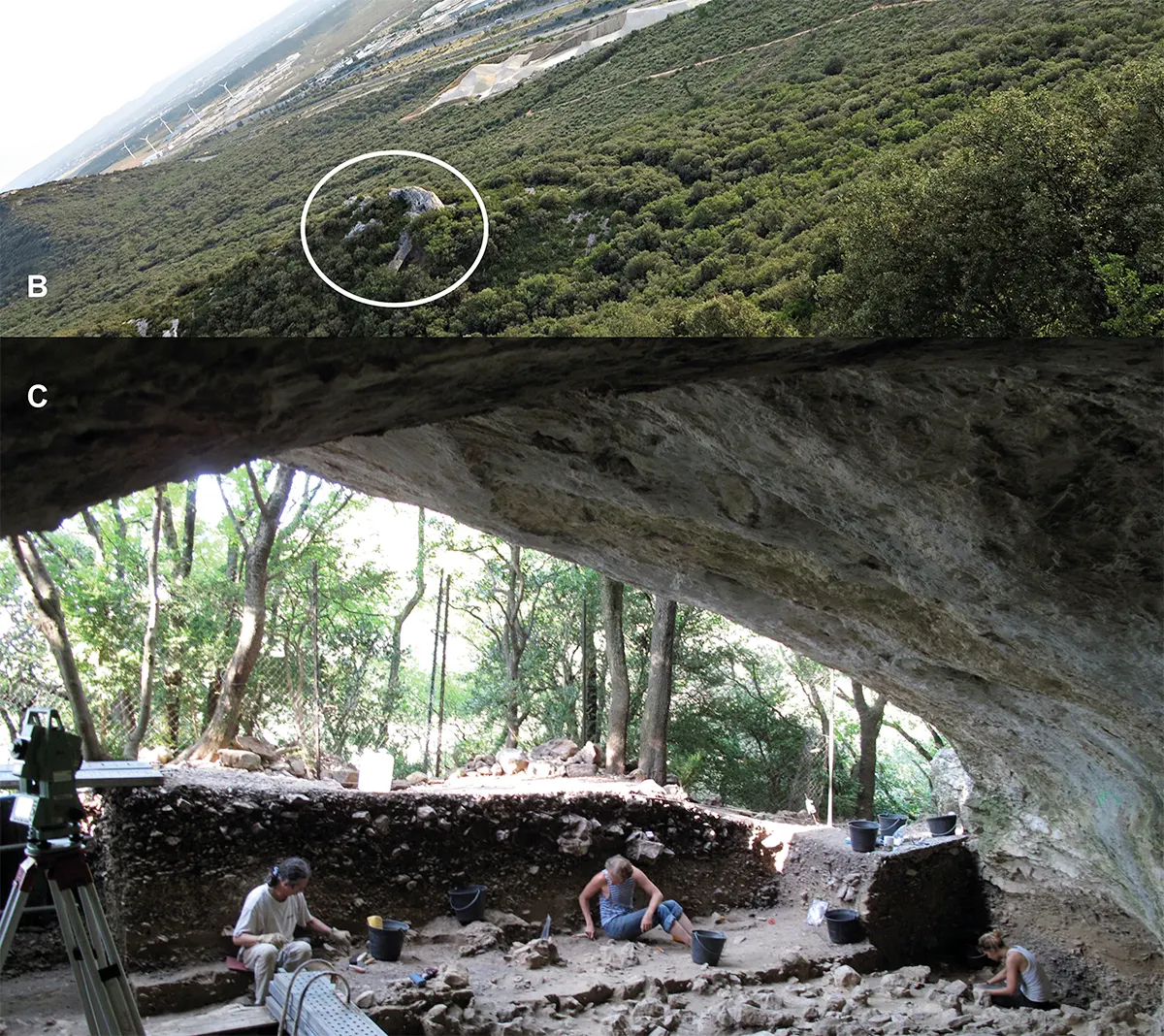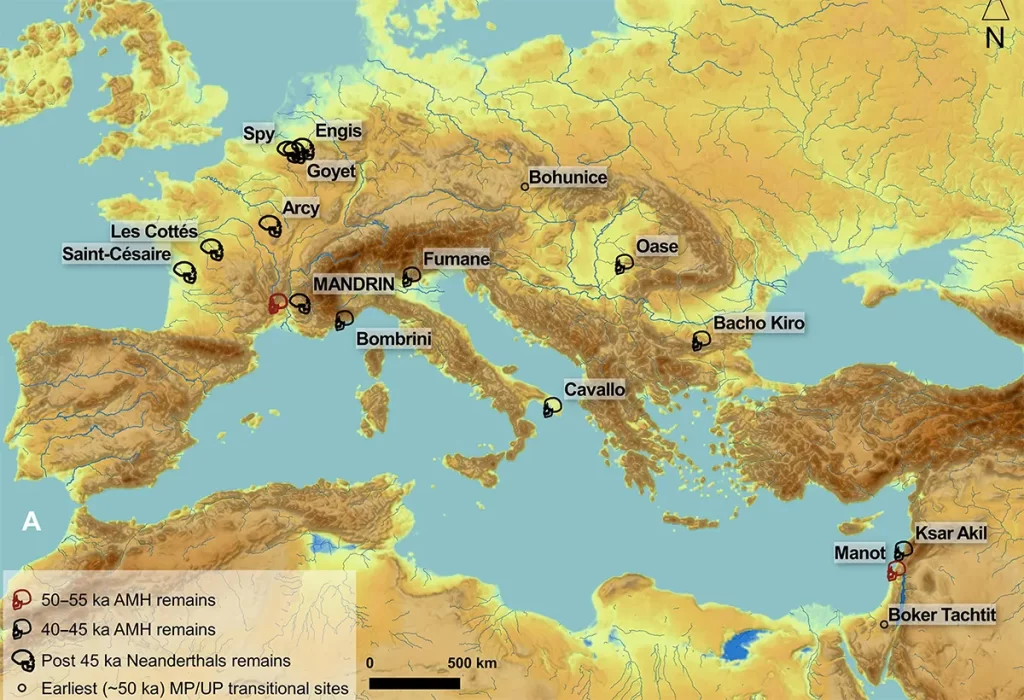di Alessandra de Nardis
Grotta Mandrin, in France is located near the city of Malataverne in a dominant position on the eastern bank of the middle valley of the Rhone river at an altitude of 225 m. Excavations since 1990 have revealed a 3 m deep stratigraphic sequence containing 12 archaeological layers ranging from the marine isotope stage to the end of the Middle Paleolithic and the emergence of the Upper Paleolithic. These layers lie within a sedimentary deposit comprising local clay at the base, wind sand at the center, and coarse roof chips at the top. The entire sequence is particularly well preserved. The site has returned a rich and well-preserved archaeological collection, which includes almost 60.000 lithic objects and over 70.000 faunal remains dominated by horses, bison and deer. By studying the structural morphology of the dental elements found in the different layers, it was possible for the researchers to distinguish Neanderthals from modern humans by assuming that Grotta Mandrin was occupied in four alternating phases by Sapiens and Neanderthals. The remains date back to about 54.000 years ago: this means that modern man would have arrived on the Old Continent almost 10.000 years earlier than previously thought.
The study was published in Science Advances by an international team of archaeologists led by Ludovic Slimak of the French National Center for Scientific Research (Cnrs).

Neronian artifacts of layer E.
(A) From top to bottom: pointed bone tip with side notches, worked deer canine, eagle's claw with cut marks, and pebble with an incised line separating the rock into two subequal parts.
(B) Details of the bone point showing traces of work with a flint tool.
(C) Details of red deer canines showing traces of destruction by a stone tool. These signs could have been to deliberately extract the canine or to modify its morphology.

Mandrin caves.
(B) Situation of the rock shelter overlooking the Rhône river valley.
(C) View from the rear of the shelter.
Photo credit: Ludovic Slimak, CNRS.
Until now the most ancient remains of sapiens ever found in Europe had been identified in Italy with the study of the DNA of two milk teeth found in the Cave of Fumane in Veneto and of Riparo Bombrini in Liguria. The study published in the journal Science made it possible to date the two teeth to 42.000 years ago.
Alessandra de Nardis


